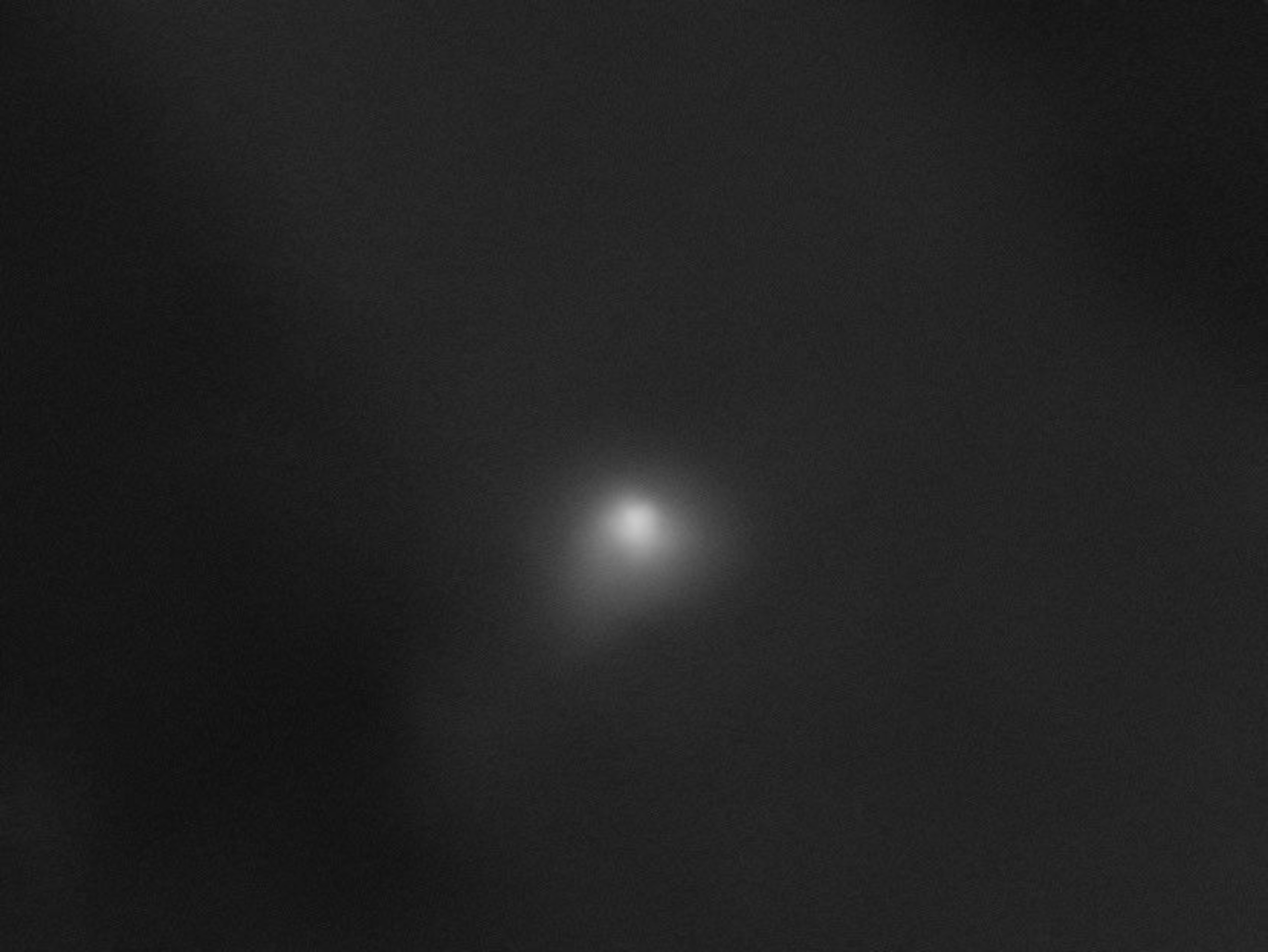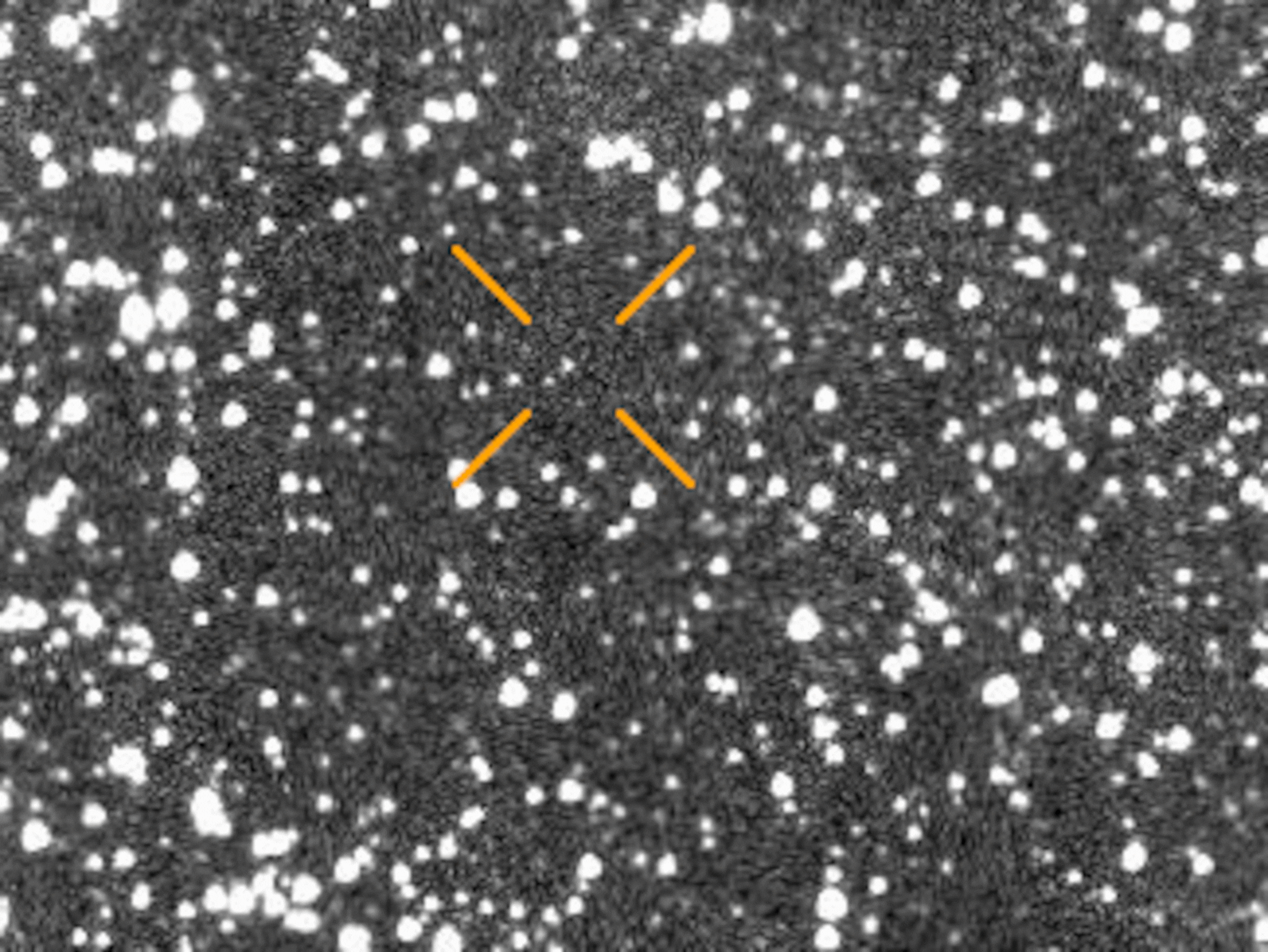
Mysterious Dust Cloud and Aurora Spotted on Mars
NASA’s newest Mars orbiter discovers unexpected things in the planet’s atmosphere.
THE WOODLANDS, Texas — Strange things are being found in Martian skies. Today, scientists announced that a spacecraft in Mars orbit spotted two surprises: an unusual aurora in the planet’s lower atmosphere and a mysterious dust cloud.
“We don’t know where the dust is coming from,” said Bruce Jakosky, principal investigator for NASA’s MAVEN spacecraft, which made the discoveries.
The dust cloud doesn’t appear to be related to the mysterious plumes spotted on the planet in 2012.
Jakosky and his colleagues announced the findings today at the Lunar and Planetary Science Conference. The conference features a full day of sessions describing early results from MAVEN, which arrived at Mars in September 2014 and is studying the planet’s atmosphere.
Christmas Lights on Mars
Auroras have been found on Mars before, but nothing quite like this one. For five days just before Christmas, the aurora glowed deep in the planet’s lower atmosphere, at an altitude of 30 to 60 miles (50 to 100 kilometers). It appeared over much of the planet’s northern hemisphere. Scientists named it “Christmas Lights,” and MAVEN observed the phenomenon in ultraviolet wavelengths on the planet’s day side.
As on Earth, auroras on Mars are produced when incoming electrons slam into atmospheric atoms. But because Mars has no protective, global magnetic field, these particles can penetrate much deeper into the planet’s atmosphere. (“It’s not your grandfather’s magnetosphere,” commented Jasper Halekas of the University of Iowa.)
Perhaps not too surprisingly, the aurora followed a barrage of particles released by the sun.
“It coincides exactly with our measurements of a solar electron storm coming in,” Jakosky said.
Dusty Mystery
The mysterious dust cloud is another unexpected find. It exists mostly at an altitude of 90 to 185 miles (150 to 300 kilometers) but can be detected even above 620 miles (1,000 kilometers). It’s no secret that Mars is a dusty place, with massive dust storms that billow across the planet’s plains and small dust devils that trace paths across the surface. But that dust normally isn’t lofted into space.
Scientists don’t know what the mysterious cloud is made of, much less whether it’s a permanent feature or where, precisely, it comes from.
“This is the first discovery of a layer of dust or debris at orbital altitudes around Mars,” Jakosky said.
It’s not your grandfather’s magnetosphere.Jasper Halekas, Physicist
In a presentation at the meeting, the University of Colorado’s Laila Andersson said her best guess is that the dust comes from lower in the Martian atmosphere, though she isn’t yet sure how it is kicked to such high altitudes.
Jakosky suggests the cloud could come from dust being knocked off the Martian moons Phobos and Deimos. He also allayed one fear: The dust shouldn't cause a problem for orbiting spacecraft.
Comet's Close Pass
Long ago, Mars had a thicker, denser atmosphere that kept the planet warm and watery. Ultimately, MAVEN’s goal is to study how that atmosphere escaped into space, leaving Mars as the colder, considerably less wet place it is today. Now, scientists are trying to determine how much of that gas and water escaped into space, and how much might be locked in the planet’s rocky subsurface.
MAVEN launched in November 2013 and pulled into orbit around Mars the next September. A few months after it arrived, comet Siding Spring went flying by, passing within 87,000 miles (140,000 kilometers) of Mars. Like other spacecraft in orbit, MAVEN hunkered down and went into safe mode as the comet passed, trying to avoid any damage from cometary debris.
When the spacecraft turned on again, it saw signs of the comet’s journey all around. What was probably a spectacular-looking meteor shower had delivered enormous amounts of metal atoms to the upper atmosphere, littering it with titanium, magnesium, iron, and other types of metals. “We see this kind of a layer on Earth, and this is the first time the metal ion layer itself has been observed at Mars,” Jakosky said.
Then, when MAVEN dipped to lower altitudes, it discovered a second metal layer, probably the result of continual delivery by comets and other interplanetary travelers. “We’re seeing a long-lived layer that is produced by dust coming in steadily, randomly, sporadically throughout the year,” Jakosky said.





